#Statistics publishers for training courses
Text
Rant about the ICD-10 and nonbinary trans identities
This one's actually just build-up to another one, but it makes me very mad, so.
What's an ICD? ICD is short for "International Statistical Classification of Diseases and Related Health Problems", which is an absolute mouthful. It's basically a catalog of diseases that gets maintained by the WHO and occasionally updated into new versions. The most recent one is the ICD-11 that was published in 2022. It is five times the size of the ICD-10, which was published in 1994. Quite a bit happened in those 28 years, you know?
For this post, the relevant sections are obviously the one regarding trans health. So let's look at them:
The ICD-10 defines "Transsexualism" as
"A desire to live and be accepted as a member of the opposite sex, usually accompanied by a sense of discomfort with, or inappropriateness of, one's anatomic sex, and a wish to have surgery and hormonal treatment to make one's body as congruent as possible with one's preferred sex."
It's categorized under "Mental and personality disorders". Such fun!
The ICD-11 now calls it "Gender incongruence" and defines it as such:
"Gender incongruence is characterised by a marked and persistent incongruence between an individual’s experienced gender and the assigned sex. Gender variant behaviour and preferences alone are not a basis for assigning the diagnoses in this group."
I don't know why it's british, and I don't care. There's a further distinction between prepubescent patients and those who have entered puberty and above. It's a bit longer and I promise it's the last stupid medical paragraph in this.
"Gender Incongruence of Adolescence and Adulthood is characterised by a marked and persistent incongruence between an individual’s experienced gender and the assigned sex, which often leads to a desire to ‘transition’, in order to live and be accepted as a person of the experienced gender, through hormonal treatment, surgery or other health care services to make the individual’s body align, as much as desired and to the extent possible, with the experienced gender. The diagnosis cannot be assigned prior the onset of puberty. Gender variant behaviour and preferences alone are not a basis for assigning the diagnosis."
Thats a lotta words. TLDR: "Person does not identify with assigned sex, likely wishes to transition to the experienced gender." Also important to note: Instead of a Mental Disorder, it's now categorized as a "Condition related to sexual health". Great!
Why is it not great? Because the ICD-11 is not currently in active use. The WHO expects a transitional period of 5 years or longer for countries to implement this. The US, for example, is aiming for an implementation in 2025, but it could extend to 2027 depending on required modifications. Non-english countries, like mine, also require time to translate the thing. Until implementation is complete, a majority of doctors are still trained to use the ICD-10. Health insurance companies also are not required to adopt definitions from the ICD-11 during the transitional period.
By the way, did you spot it? It's a small, but important difference: "the opposite sex" (ICD-10) vs "the experienced gender" (ICD-11). That's right, the current system only acknowledges binary trans people! Good for them, awful for me!
Now, of course there will be doctors who know better and acknowledge nonbinary identities, but under this current catalog, they do not have to. Neither does your health insurance. So if I, who is decidedly not of the binary variety, want health care and I want my insurance to cover it (just to stress again: I am not in the US), my best bet is to lie.
If I want trans healthcare, instead of getting a kind that is best suited for me and my identity, I should tell my health care providers a fabricated story about how very binary my transness is.
You realize what that is, right? It's another gender identity being assigned to me that doesn't match my own. Isn't that ironic?
But hey, only three more years until we get it implemented. Maybe.
#rant#trans rant#long post#trans#genderqueer#lgbtq#transgender#nonbinary#nb#enby#trans healthcare#shits fucked#also carhammerexplosionmatt#boring medical jargon#queer#trans rights#i just want someone to take my tiddies#crimes against the gender convention
30 notes
·
View notes
Text
Part 10 of "Letters from Watson" of The Sign of the Four starts with Sherlock Holmes enthusiastically infodumping.
He appeared to be in a state of nervous exaltation. I have never known him so brilliant. He spoke on a quick succession of subjects,—on miracle-plays, on medieval pottery, on Stradivarius violins, on the Buddhism of Ceylon, and on the war-ships of the future,—handling each as though he had made a special study of it. His bright humor marked the reaction from his black depression of the preceding days.
I wondered "why these topics in particular?"
Miracle plays were, in 1890, the subject of a new book by Alfred W. Pollard of the British Museum. It received a positive review in The Spectator.
The Arts & Crafts Exhibition Society had its first exhibition in London in 1888. While handicrafting, the William Morris aesthetic, and such, had been around for a while by then, this was the big organized push for public attention. Not only did the Arts & Crafts movement draw on medieval influences, but many a UK pottery maker was on the site of a medieval kiln and interested in medieval techniques.
Stradivarius violins are, of course, the sought-after antique violin. There were at least two donated to the Musée de la Musique in Paris shortly before the time of this story, as well as a number getting heard by important violinists in important orchestras. Even more interestingly from Holmes' point of view, a factory in Germany had just started making Stradivarius copies.
Buddhism in Sri Lanka had lapsed into torpor in the early 19th century but was, by 1890, well into a resurgence. The kick-off, back in 1866, had been Buddhist monk Mohottivatte Gunananda challenging Christian missionaries to a debate. In 1890, he had just died; but he had founded a political movement.
As for war-ships, in 1889, the Naval Defense Act had passed. It called for the UK Navy to be maintained at least twice as large as the combined navies of the next two largest powers (then France and Russia). War ships -- both quantity and design -- had doubtless been in the news for a while.
These aren't obscure hyperfixations (though I'm all for obscure hyperfixations!). These are conversational topics appropriate for a well-read gentleman of the era: the sort who gets three or four newspapers, reads the book reviews, and then reads the books reviewed. This explains how Dr. Watson and Athelney Jones set him off, or even participated in the conversation.
We also, while on a boat, get the return of Winwood Reade's Martyrdom of Man (making it Chekhov's book reference?). Says Holmes of Reade:
“He remarks that, while the individual man is an insoluble puzzle, in the aggregate he becomes a mathematical certainty. You can, for example, never foretell what any one man will do, but you can say with precision what an average number will be up to. Individuals vary, but percentages remain constant. So says the statistician."
Statistics was not new -- scholarly sorts had become engaged with statistics during the Enlightenment -- but it was in the early stages of being systematized into the mathematical field we know today. Holmes sounds like he would have been a fan of Francis Ysidro Edgeworth's Metre-like: Or the Method of Measuring Probability and Utility, published in 1887, since it attempted to use probability as the basis of inductive reasoning.
Then we have a boat chase.
I love the boat chase. I feel like the boat chase might have contributed to inspiration for the train chase in Nicholas Meyers' The Seven Percent Solution, though I also feel that a train chase needs no justification other than "we have two trains and a problem."
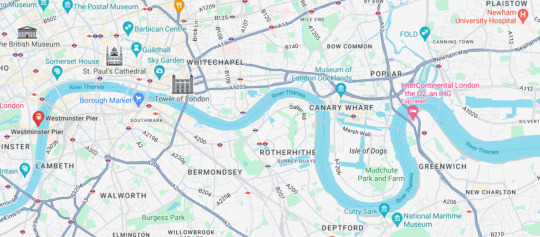
Our heroes leave from Westminster Wharf, which I'm assuming is roughly today's Westminster Pier, which had not yet received its statue of Boudica. (Westminster is conveniently southeast of Marylebone, where Baker Street is located.) So that long gentle curve is the river past St. Paul's and the Tower of London and under multiple bridges. They pick up the Aurora about where the river heads into that first shallow down-curve and chase it up and down, around the Isle of Dogs, up past Greenwich, and around the down curve at Blackwall. So they must catch it as the river starts to straighten and widen.
A pleasure tour from Westminster Pier to Greenwich today takes about an hour, but those are the boats their launch was passing like they were standing still. The Eva, a Thames Steam Launch of the appropriate era, was one of the speediest of the time and could achieve 16.5 miles/hour.
Then... I really would have preferred an actual monkey. We've now had in this chapter so many reminders of the achievements of European, particularly English, civilization that the avalanche of adjectives framing the Andaman Islander as primitive stands out as a deliberate counterpoint, despite the inclusion of Ceylon and Winwood Reade. Will we ever know what the Andaman Islander Accomplice's motivations were? (If yes, will I wish even more fervently that we'd just stuck with a monkey?)
I love the boat chase, though.
16 notes
·
View notes
Text




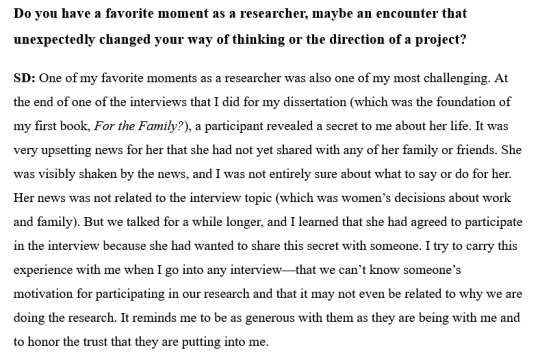
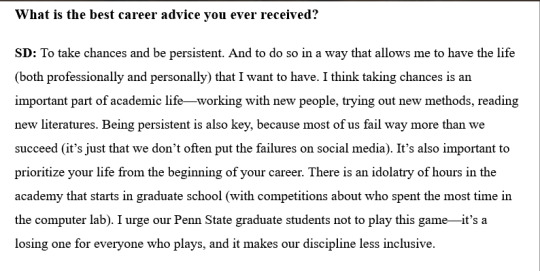



Dear Subscribers,
This month’s Office Hours is a conversation with Sarah Damaske, author of The Tolls of Uncertainty (now available in paperback). Damaske is a professor of sociology and labor and employment relations at Pennsylvania State University. She shares some good reasons to be hopeful about the future of sociology and also reminds us of the potential for profound and surprising moments during interviews.
Enjoy!
What are you reading now?
SD: I am reading two books right now more for leisure.
I’ve just picked up When the Moon Was Ours by Anna-Marie McLemore. I’m really looking forward to reading it, as several people recommended it to me. I just finished Take My Hand by Dolen Perkins-Valdez, which is a spectacular book inspired by a real legal case in which two Black girls in Alabama (with the Southern Poverty Law Center) sued the government after having been sterilized without consent. It tells this awful truth about the history of forced sterilization that was happening during the Civil Rights era and makes very explicit connections between these sterilizations and eugenics and structural racism in the United States. It’s also a beautifully written story about the life of a Black nurse who starts to work for a reproduction clinic in her hometown and how this tragedy unfolds in her life and in the lives of the people around her.
What book has had the most impact on your career?
SD: Trick question! I’m not sure I can pick just one. Julie Bettie’s Women Without Class left a profoundly influential mark on my career, as did Leslie McCall’s Complex Inequality. They are really different books—one is an ethnography of White and Mexican-American girls at a high school in California and the other uses “mesocomparative” statistical analyses to examine wage gaps in local labor markets. But both take explicitly intersectional and feminist perspectives to understanding inequalities. These frameworks have guided my own research and I continue to be inspired by both books to this day (my copies of each are worn on the edges from so many re-readings).
What is your favorite book to teach?
SD: One of the benefits of teaching a Qualitative Methods graduate course, is that I can sneak many of my favorites—or at least parts of my favorites—into the curriculum (and that I can read a lot of terrific new work). If I have to pick, I will say that it’s Miliann Kang’s The Managed Hand. It’s deeply theoretical and also highly accessible. I’ve been teaching it at the undergraduate and graduate levels since it was first published and it’s a book that does a terrific job of sparking students’ sociological imaginations.
What first sparked your interest in sociology?
SD: I took several classes in Sociology as an undergraduate at Hamilton College, but I didn’t major in Sociology, although I really enjoyed my classes. After college, I started working and realized that I was reading sociology books on the subway (the F train) into work every day. I asked Mitchell Stevens (who is at Stanford now but had first introduced Sociology to me when I was an undergrad at Hamilton) if he would have time to chat about the possibility of my returning to grad school. During our conversation, he encouraged me to take a chance and apply to doctoral programs. I’m lucky that he gave me that push, as I never looked back.
Do you have a favorite moment as a researcher, maybe an encounter that unexpectedly changed your way of thinking or the direction of a project?
SD: One of my favorite moments as a researcher was also one of my most challenging. At the end of one of the interviews that I did for my dissertation (which was the foundation of my first book, For the Family?), a participant revealed a secret to me about her life. It was very upsetting news for her that she had not yet shared with any of her family or friends. She was visibly shaken by the news, and I was not entirely sure about what to say or do for her. Her news was not related to the interview topic (which was women’s decisions about work and family). But we talked for a while longer, and I learned that she had agreed to participate in the interview because she had wanted to share this secret with someone. I try to carry this experience with me when I go into any interview—that we can’t know someone’s motivation for participating in our research and that it may not even be related to why we are doing the research. It reminds me to be as generous with them as they are being with me and to honor the trust that they are putting into me.
What is the best career advice you ever received?
SD: To take chances and be persistent. And to do so in a way that allows me to have the life (both professionally and personally) that I want to have. I think taking chances is an important part of academic life—working with new people, trying out new methods, reading new literatures. Being persistent is also key, because most of us fail way more than we succeed (it’s just that we don’t often put the failures on social media). It’s also important to prioritize your life from the beginning of your career. There is an idolatry of hours in the academy that starts in graduate school (with competitions about who spent the most time in the computer lab). I urge our Penn State graduate students not to play this game—it’s a losing one for everyone who plays, and it makes our discipline less inclusive.
What subject do you wish more sociologists would study and write about?
SD: I am not sure I need to wish—I just need to look around and see what people are doing. Jason Park, a PSU graduate student that I work with, did a really cool MA thesis on the roles of institutional and cultural contexts in shaping the occupational segregation of sexual minorities. This past semester in my Qualitative Methods class, students worked on proposals that ranged from climate change induced migration, to incel subculture, to queer joy and substance use, and to Holocaust survivors’ narratives about sexual trauma. There is so much amazing work being done.
If you could have dinner with two sociologists, living or passed, who would you choose, and why?
SD: I would love to have dinner with Anita Garey and Suzanne Bianchi. They both were both important family scholars who we lost way too early. And while I had gotten to know each a tiny bit when I was a graduate student, I didn’t know them well and I would have loved the opportunity to do so.
What makes you feel hopeful about the future of sociology?
Students, conference sessions, and Twitter. I’ll explain in reverse order. Twitter is really problematic these days—but I can’t find another social media platform that will let me know about what such a wide range of sociologists are doing. And when I see what they are doing—and the reach that their work has on public life—I am amazed and inspired. And really proud to be a sociologist. Conference sessions are also high on my list, as I love hearing about the work people are doing and I love meeting new scholars. Conferences let me do both. Finally, our students—both undergraduate and graduate—are tackling such interesting and important questions. And they are asking questions that I’ve never thought of asking. It’s really an exciting time for our discipline, as I think there is so much about the world that we can help explain.
16 notes
·
View notes
Note
are you supported writers in ao3 against a.i. thieves ?
I did not realize my stance on this issue was super hard to figure out (hint: it's not. I'm against AI and have said so, so this ask seems to be about signaling rather than a sincere request).
Right now A.I. is not intelligent. It is ingesting the unprecedented amounts of data that human beings have created. This is the first time in history that statistics could be applied to such enormous language training sets (can you imagine trying to enter the data onto a computer back in the day when computers were terminals?)
That means that right now, it is taking as much human created data as it can to try to spit out things that are similar but not identical to what it ingested. It's why AI is extremely well-versed in the Omegaverse, because it's been scraping fanfic archives (and everything else, including a LOT of stealing intellectual property that could lead to lawsuits).
So someone coming to an unfinished story, copying it into some AI bot and then saying "give me an ending" even if they have no intention of publishing it is stealing, because it's giving new intellectual property to the A.I. language set to use to more efficiently parrot things back.
Don't buy into the hype that we are three steps away from self-awareness. A.I. can only give us a guessed model of things that it ate (kind of like when I fit a line through lots of datapoints!), often illegally. It's very good at plagiarizing and lying.
So please stop sending me asks about whether I will stand up and say (AGAIN) that of-fucking-course I support AO3 writers against thieves coming in and stealing their stories and feeding ever more into the plagiarism machine.
What else am I doing about it? Well, I reupped my membership to OTW, so that I can voice these serious concerns to the board as they sit with the reality of A.I. and what the unscrupulous are doing with that A.I. AO3 is an archive designed for people to look at things that they loved and closed their eyes and imagined what (and who) their favorite characters could be doing, then sat down at their computers or with their notebooks and actually put to words (or art) those things to share with the rest of us.
So... do you want to know what to do since your favorite story ever ended on a cliffhanger and it's driving you nuts because you want to "know the ending?" Here are some non-A.I. things you can do!
Comment on that fic, explaining why it is your favorite and how it makes you feel (though avoid "when is the next chapter?" comments, they can make the muse go back into its cave to hide).
Make some fandom friends. especially ones that love said story as much as you do, and roleplay an ending privately in a Discord server with those friends. The reason that putting a story into ChatGPT and then finishing it is ucky is because ChatGPT remembers and steals that input.
Ask yourself why you loved that thing so much. Is it because it is a clever trope perhaps? Or the premise is delicious? Well then, sit down and open a document (or notebook) and write your own version, then use AO3's Inspired By to credit the original story. Why is this different than A.I.? Because it's connections you yourself are making, instead of parroting out plagiarism.
Go onto your fandom social media account and say something about how much that unfinished story means to you and why, because you never know if there's a writer out there who just needs that tiny little push to finish.
And when can we think about all this generative A.I. stuff and use it? Well, once policies are in place for transparency in what is in the training set. Ways to opt out your creations (this includes retroactively). Right now the tech bros are running away as fast as they can with the stolen treasure chest and hoping they run far enough that governments throw up their hands and don't tell them to return what they stole. Don't let them do that.
So, there you have it.
I support writers against content thieves throwing their work into A.I., and now you even have a handy-dandy little list of things you can do if you are hungry for the end of the story that does not involve plagiarizing and stealing!
#anon asks#neut answers#seriously why was this even a question for me?#there ARE things you can do that don't involve AI#anti-ChatGPT
10 notes
·
View notes
Photo
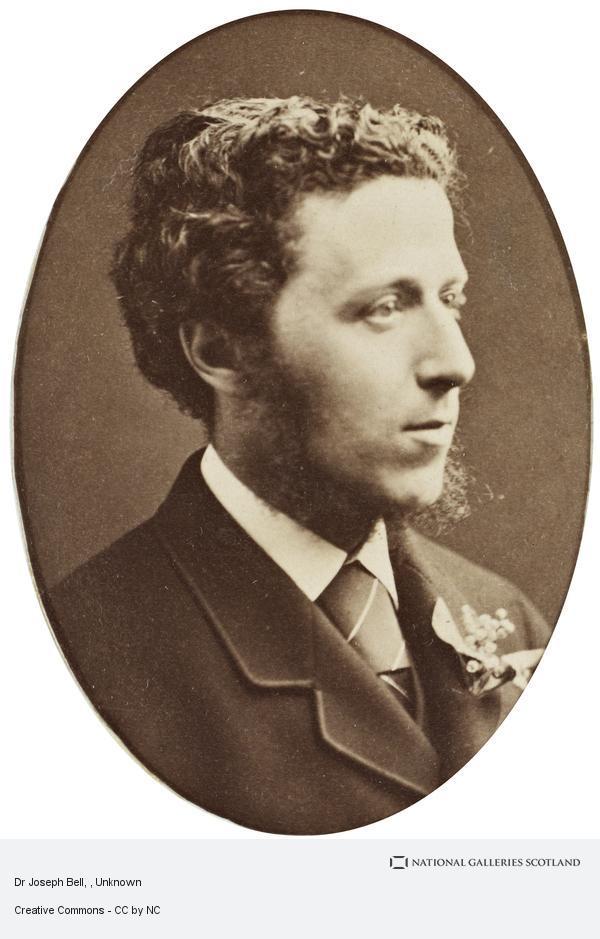
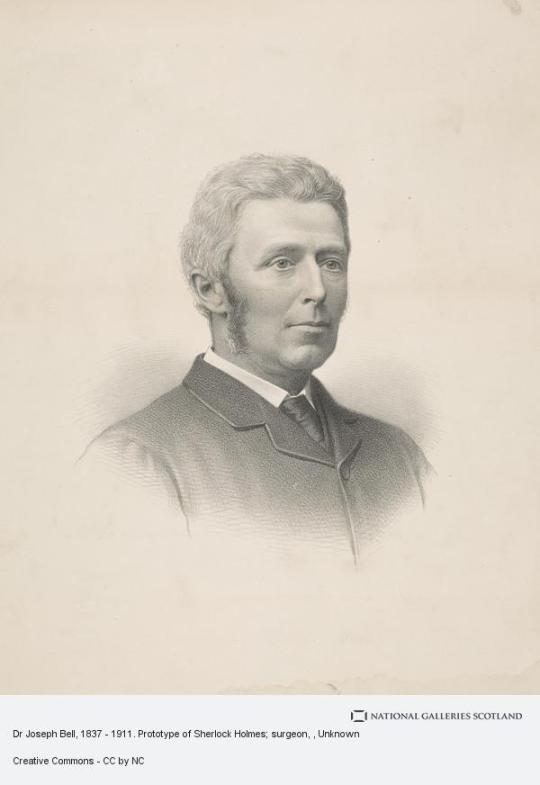
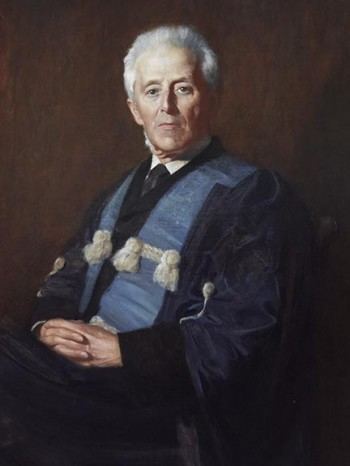


December 2nd 1837 saw the birth in Edinburgh of Joseph Bell, the lecturer in medicine whose deductive approach to diagnosis inspired Arthur Conan Doyle’s character Sherlock Holmes.
Bell attended the Edinburgh Academy before studying medicine at the University of Edinburgh. He graduated with his MD in 1859 and became a house surgeon at the Edinburgh Royal Infirmary under James Syme. He then went on to become a demonstrator in anatomy at the University of Edinburgh Medical School before becoming a lecturer in surgery and in clinical surgery. He also started the first nurses’ training course in Scotland at the Royal Infirmary. He was also personal surgeon to Queen Victoria whenever she was in Edinburgh, and became a Justice of the Peace, and a Deputy Lord Lieutenant.
Among his students and contemporaries Bell became famous for his ability to make swift and accurate diagnoses of patients, often on the basis of close observation of clues that others simply never saw. His party-piece was to pick a stranger and, through observation, deduce his occupation and recent activities. One of Bell’s students in 1877 was Arthur Conan Doyle. Bell clearly made a strong impression on Doyle. In 1887 the latter published A Study in Scarlet which marked the first appearance of Sherlock Holmes. Holmes was explicitly modelled on Joseph Bell and Doyle later wrote a letter to him saying: “It is most certainly to you that I owe Sherlock Holmes although, in the stories, I have the advantage of being able to place him in all sorts of dramatic situations”. It is said that Bell took considerable pride in the success of the Sherlock Holmes stories.
Joseph Bell died in 1911. He was buried in Edinburgh’s Dean Cemetery next to his wife, Edith Murray. In November 2004, the US Fox TV network aired the first episode of the American medical drama House, starring the English actor Hugh Laurie. The creator of the series has described it as “a subtle homage to Sherlock Holmes”: which in many ways brings the setting for the character full circle back to its medical roots and to Joseph Bell. He is remembered more directly in the name of the Joseph Bell Centre, established in 2001 as a centre for Forensic Statistics and Legal Reasoning by the University of Edinburgh, Glasgow Caledonian University and the Lothian & Borders Police Forensic Science Laboratory.
Conan Doyle described Bell as “a tall, stately, kindly man, keen eyes and aquiline features contributing to his air of intent investigation.”
#Scotland#scottish#Edinburgh#sherlock holmes#professor#tutor#teacher#university of edinburgh#history
39 notes
·
View notes
Text
Are There Chances of Chatgpt Replacing Programmers?

Artificial Intelligence (AI) is creating waves across various industries including the tech industry. The emergence of the various language models that include Chatgpt has left may wondering whether AI will be replacing the programmers. Chatgpt is a natural language chatbot that helps people write emails, college essays, song lyrics etc. Some of the earliest users of chatgpt have even used it to write the python code. The popularity of chatgpt has grown because of its practical applications. The question that however arises here is whether it will be able to replace the developers and the writers just as computers and robots have replaced cashiers and assembly line workers or perhaps the taxi drivers in the future. If you are interested in understanding how you can improve your work with chatgpt, you can pursue a good Search Engine Marketing Course In Gurugram.
Reasons for The Growing Popularity of Chatgpt
Chatgpt has been able to impress several people as it is able to simulate human conversations and also sounds quite knowledgeable. Chatgpt has been developed by OpenAI which is the creator of the most popular text to image AI engine called Dall- E. Chatgpt uses algorithms that helps in analysing and humans fine tune the system’s training to respond to the questions of the user with full sentences that sound similar to that of human beings.
Statistics Related to Chatgpt
A recent paper that was published by OpenAI revealed that as many as 80% of the US workforce have a minimum of 10% of their tasks affected by Chatgpt and other language models. Another research revealed that as many as 20% of the workers will find that 50% of their tasks will get affected by AI. If you want to become a web designer, you can get in touch with the best Search engine marketing institute in Gurgaon. Here you will get to learn about the use of chatgpt in the best way so that you are able to stay ahead in the competition.
The programmers can be relieved for now as it is not among the hundred professions that are going to be impacted by Chatgpt. Some of the professions that will be impacted include:
Why Will It Not Affect The Programmers?
Though Chatgpt is able to generate code and is also able to write programs, however, the process lacks proper understanding, problem solving ability and creativity that human beings have. It operates based on the patterns of the data that he was trained on. Like human programmers, it is not able to understand the code that it writes. It is also not able to understand the requirements of the projects and is not able to make It can’t understand project requirements, make architectural decisions to solve the human problems in a creative manner.
It is true that AI is able to automate repetitive tasks but programming is not just about writing codes. It is much more than that. Programming requires high level decision, personal interaction and strategic planning that AI is not able to do as these are elements that cannot be automated.
Software development is a creative field that requires users' understanding, based on feedback and sometimes abandoning the initial plans and starting all over again. All of these fall outside the realm of the AI capabilities. Pursuing a good online SEM course in Gurgaon will certainly benefit you.
Flaws of Chatgpt
1. Chatgpt has some flaws and limitations and that is why it cannot be a perfect content writing tool. It is also not a very reliable tool for creating codes as it is based on data and not on human intelligence. The sentences might sound coherent but they are not critically informed responses.
2. It is true that in the website of Chatgpt, you will find out ways that will help you debug code using this tool. But the responses are generated from prior code and it is incapable of replicating human based QA. This means that the code that it will generate will have bugs and errors. OpenAI have themselves accepted the fact that the tool at times writes plausible sounding but nonsensical and incorrect answers. So it is important for you to not use it directly in the production of any program.
3. The lack of reliability is creating a lot of problems for the developer community. In a question and answer website called Stack Overflow, where the coders used chatgpt to write and troubleshoot codes have banned its use. The reason for this is that there is such a huge volume of response generated by Chatgpt that it could not keep up with the quality which is done by humans. The average rate of getting correct answers in chatgpt is quite less. So, chatgpt is harmful for the site and for those people who are looking for correct answers from that site.
4. It is important to understand here that Chatgpt, like the other machine learning tools, is trained on data that suits its outcome. It is therefore unable to understand the human context of computing to do the programming properly. It is essential for the software engineers to understand the purpose of the software that they are developing and also the purpose of the people using it. It is not possible to create good software just by cobbling programs together.
Conclusion
So the simple answer to the question as to whether chatgpt will be able to replace the programmers is “No”. Chatgpt and the other AI tools can certainly automate the tasks, however they cannot replace human creativity, understanding and the problem solving capabilities. As of now we should consider AI as an augmenting force. It is a tool that helps programmers and software developers to be much more effective in their respective roles. Though chatgpt does have some flaws, if you want to learn to use it in the most effective way, you can get in touch with the Best SEM Training Institute in Gurgaon.
#digitaldrive360#seo#digital marketing training institute in gurgaon#sem course in gurgaon#digital marketing#online sem course in gurgaon#best sem training institute#digital marketing courses in gurgaon#digital marketing training in gurgaon#sem#digital marketing training institute#digital marketing institute#Digital Marketing Courses#Digital Marketing Course#Digital Marketing Course Gurgaon#Digital Marketing Course in Gurgaon#digital marketing institute Gurgaon#Digital Marketing Institute in Gurgaon#Online Digital Marketing Course gurgaon#Digital Marketing Courses Gurgaon#Online digital marketing course in gurgaon#best digital marketing institute in gurgaon#SEO Training Course Gurgaon#SEO Training in Gurgaon#SEO Training Course in Gurgaon#Search engine optimizaton institute in Gurgaon#SEO institute in Gurgaon#Best SEO Training in Gurgaon#SEO Course in Gurgaon#SEO Training Classes in Gurgaon
3 notes
·
View notes
Note
If tumblr staff is too tiny and powerless to deal with hate speech effectively, they should also be too tiny and powerless to obsessively flag trans content.
Hope this helps ❤️✨
tell me you know nothing abt site moderation without saying you know nothing abt site moderation
do you honestly think a couple hundred people At Most are fully capable of effectively moderating, last i checked statistics, around 13 million posts per day? 13,000,000??? per day???
assuming even a moderation-only staff of 200 people working every single day (which tumblr def does not have--that one leaked memo said they had ~200 fulltime employees *total* before the recent downsizing, not all of which are moderation), that works out to around ~65k posts per person per day.
do you have time to review more than 65k posts every day? of course not. even with a filter algorithm (100% essential btw, because staff should not be forced to comb every single post for shit like literal actual csem, never mind hate speech and gore posted in popular tags as part of a 4chan raid or whatever) that's basically impossible. and you NEED to manually review posts for shit like hate speech, because overly-aggressive filtering is more likely to fuck over people explaining dogwhistles to look out for than, y'know, actual hate speech/symbols
also, sorry you came from the dimension where staff loves to play flag-the-trans-posts, but in this dimension that's a combination of:
- necessary algorithm (reasons listed above) having been trained pretty fuckily during the Verizon occupation, and
- the (usually offsite-organized) terf groups who stalk and mass flag trans people, especially popular ones, and remake accounts to keep doing it when they get blocked (which is the unfortunate tradeoff of an easy account sign-up process)
the vast majority of maliciously flagged trans posts i've seen get unflagged within a few weeks. yes, that sucks to wait on, but it's also a reasonable time frame when one considers the ratio of staff to staff-tasks-per-day. check the notes on any post about a flagged selfie or trans art older than abt 2 weeks; chances are good you'll see the humans blog, or another staffer, apologizing for the delay.
disclaimer: im trans and am not/have never been employed by tungl dot hell, and i also take issue with some of their decisions, but at this point i'm a lot more worried abt the user-led conspiracy about staff being made entirely of cryptoterfs (despite multiple accounts from current and former staffers, plus their own published info, showing tumblr has more queer people on board than the average socmed/tech company by a significant margin) who are supposedly paid to sit there and maliciously flag us icky trans users for funsies and enrichment all day
tl;dr y'all are on that reverse gaylor shit. stop it.
#stirring up trouble#idek what this is response to bc i've had this discussion so many fucking times now#but i am officially tired of having it#long post
3 notes
·
View notes
Note
Hi, Kirri! I'm from South America and I'm trying to do a research about australian high school. I would like you to clarify some questions I have about school subjects, like: which ones are optional and which are mandatory? also, if you could send me some reliable websites than i can look up. every website i see says something different, can be very confusing so I decided to ask a australian person. Thank you!!!!
Hi, hey, i've been summoned! Okay, i'll admit to you upfront, it's been a hot minute since I was in high school so my knowledge is partly from personal experience but also what is published online. The school structures and curriculum differs from state to state, so it's no wonder you had trouble finding clear answers. I'll try to explain simply:
Australian high schools run from years 7 to 12. (We actually have 13 school years in total including Kindergarten, or preparatory, which is not numbered.) Students can finish in year 10 if they choose not to complete their senior years and test for university entry. If a student finishes in year 10, they get a Record of School Achievement; if they finish senior studies, they get a certificate of education depending on which state they're in:
NSW - Higher School Certificate (HSC)
VIC - Victorian Certificate of Education (VCE)/Victorian Certificate of Applied Learning (VCAL)
QLD - Queensland Certificate of Education (QCE), Queensland Certificate of Individual Achievement (QCIA)
SA - South Australian Certificate of Education (SACE)
WA - West Australian Certificate of Education (WACE)
TAS - Tasmanian Certificate of Education (TCE)
ACT - Australian Capital Territory Senior Secondary Certificate (ACT SSC)
NT - Northern Territory Certificate of Education (NTCE)
The national curriculum has eight compulsory learning areas, which can be categorized into subjects:

Then there are a wide range of electives, which vary greatly depending on region, type of school (state-funded vs private/faith-based) etc. Students in years 9 and 10 typically choose three electives. Here is an example of electives available to a school in NSW.
In addition, many schools offer the opportunity to study a vocational (often trade-based) course in preparation for studies after high school, called TVET (TAFE-delivered Vocational Education and Training). Many of these course results in credits toward school outcomes. I guess you could say that TAFE to Australia is like community college to the US.
The school year is broken up into four 'terms', with dates varying between states (see links at end for a list). A typical school day goes from 8:45am to 3:00pm Monday to Friday, with breaks for recess and lunch between period. A 'period' = one class, which typically runs for 40 minutes.
Upon completing senior studies and final exams, students are given an ATAR (Australian Tertiary Admission Rank), which they can use to select and be admitted to university. In fact, senior exams have just begun so it's a good time to keep an eye on social media and see how current students are talking about the experience! 'ATAR Day' (when rankings are released) is on December 14, another time to take a look.
Australia also has specialist high schools, such as creative and performing arts schools, intensive English centres (for students with English as a second language), sports schools, and technology schools. All of these must teach the compulsory subjects, but offer the chance to specialize in these areas.
Websites where you can learn more about the Australian curriculum:
Australian Curriculum Version 9.0
Australian Schools Directory
Study Australia
ACARA (for statistics)
TVET
ATAR
Hopefully that will help you! I hope you don't mind that I posted this answer but I thought it might be useful to others as well. If you have any other questions, go ahead and ask and i'll do my best!
2 notes
·
View notes
Photo

Big data astronomy: Using statistics in a new way to decipher the universe The digital age has been a tremendous boon to the fields of both statistics and astronomy. However, according to Dr. Max Bonamente, a professor of physics and astronomy at The University of Alabama in Huntsville (UAH), most astronomers are not sufficiently trained to realize the substantial benefits to be gained by putting these disciplines together. He and his colleagues are working to change all that through pioneering research in the burgeoning field of astrostatistics. Dr. Bonamente published a paper in the Monthly Notices of the Royal Astronomical Society showcasing an innovative new twist in probability distributions that promises to revolutionize the ways cosmological data can be interpreted. "Traditionally, astronomers have been poor statisticians—we like to 'make up the statistics as we go,'" the researcher explains. "My latest paper is a new method to account for systematic errors. It describes a new probability distribution method I developed that hadn't been thought of before. It's nerdy stuff, but has real-life implications in terms of making conclusions from observations. Many astronomers don't have the necessary math background to do statistics carefully. It's hard, because statistics is hard math at its core. Few people want to take the extra time to do it. Of course, not everyone feels that way." This is evidenced by the success of a workshop called iid2022: Statistical Methods for Event Data and subtitled, Illuminating the Dynamic Universe, recently hosted by UAH, a part of The University of Alabama System. Dr. Bonamente and his colleague, Dr. Lingling Zhao, an assistant professor of space science, organized the workshop. The gathering was designed to train young scientists in proper statistical methods for the analysis and interpretation of data and included hands-on collaborative analysis of sample problems employing advanced software. The gathering also provided a forum for astronomers and researchers in related fields to exchange recent advances in the analysis of event data. "Event data" are the collection of individual events—in astronomy, typically light photons, but also neutrinos or other particles. These events can be studied through statistical applications as a function of location (images), time (such as light curves) or energy or wavelength (spectra). Events can also be defined as ensembles of quantities, such as gravitational wave events or galaxy clusters detected through measurements of the Cosmic Microwave Background, which is the cooled remnant of the first light that could ever travel freely throughout the universe. A native of Italy, Dr. Bonamente moved to the U.S. in 1997, and is a UAH alumnus, earning both an M.S. and Ph.D. in physics at UAH, where he has developed the use of a statistical method called Markov chain Monte Carlo (MCMC) for analysis of cosmological events. MCMCs comprise a class of special algorithms used in probability distributions, a mathematical function that gives the probabilities of the occurrence of different possible outcomes for an experiment. "These methods have made it possible to analyze data faster and with greater accuracy," the researcher notes. "Nowadays, machine learning is everywhere in astronomy. We used MCMCs to measure the Hubble constant, for example, which was a big deal at the time." The Hubble constant is one of the most important numbers in cosmology, because it tells us how fast the universe is expanding. Astrostatistics represents the future of big data management and analysis in astronomy, as the latest technologies are producing staggering amounts of data of truly mindboggling complexity. The challenge to analyze this data is only growing exponentially as new data-gathering mechanisms evolve in radio, microwave, infrared, X-ray, gamma ray, interferometer and optical instruments that will require new statistical algorithms and techniques to make sense of it all. "Most astronomers or physicists don't know much of probability theory, let alone statistics," Dr. Bonamente points out. "A scientist's job ought to be that of being careful, and not to give in to the desire to find a great new result when it's not there. So, marrying math and astronomy is the natural direction for me."
5 notes
·
View notes
Text
If your government is paying lobbyists from your community maybe your not as oppressed as you say you are.
AU — . An Australian politician has revealed that “more than 30 federal departments and agencies” are paying a transgender and queer lobby group for “advice and staff training on so-called ‘inclusive’ language.”
Senator Claire Chandler, a Senator of Tasmania for the Liberal Party, said in an Op-Ed published on her website today that the federal Department of Health had last year replaced a pregnancy COVID-19 vaccination guide’s fifty references to ‘women’ with the phrase ‘pregnant person’.
Noting that “removal of specific sex-based language undermines the accuracy of health advice for pregnant women,” and the “overwhelming majority of Australians don’t find the re-labelling of mothers as ‘birthing parents’ or ‘pregnant people’ inclusive” but instead “unnecessary, sexist virtue-signalling,” Senator Chandler was motivated to contact the Department of Health to uncover what was driving its “ideological capture.”

In January, Senator Chandler queried the Department of Health about its “mind-boggling waste of resources during a pandemic.”
This month, she learned:
“The Department’s answer was that it receives ‘a benchmark and suggestions’ on ‘the use of inclusive language’ from the lobby group Pride in Diversity. Services Australia was presented with a “Gold Employer” award by the same lobby group this year, apparently around the same time it was starting to re-label mothers as ‘birthing parents’.”
Pride in Diversity is a program by the New South Wales-based ACON, which is described on its website as a “health promotion organisation” campaigning for “sexuality and gender diverse health.” The tax-exempt non-profit offers nationwide “services to assist employers, sporting organisations and service providers” with “inclusion” through its three programs, which aside from Pride in Diversity are Pride in Sport and Pride in Health + Wellbeing. ACON ranks employers by its “benchmarking instrument for LGBTQ workplace inclusion.” Employers who best conform to ACON’s standards are given incentives in the forms of high rankings on the Australian Workplace Equality Index (AWEI), which is published by ACON, as well as awards.
Senator Claire further revealed: “All up, more than thirty federal Departments and Agencies have been paying this lobby group for advice and staff training on so-called ‘inclusive’ language.”
This “influence of lobby groups over the public service” has been evident, as “the Office for Women declares that anyone who identifies as a woman is a woman, … Sport Australia encourages males who identify as women to play women’s sport,” and “Australian Bureau of Statistics claimed that humans can change sex over the course of their lifetime (a claim it was forced to amend after I asked them at Senate Estimates if they’d checked it with biologists).”
Further, the scheme has had “detrimental” effects on women’s human rights in Australia and internationally, with law and policy “increasingly allowing males to self-identify into women’s spaces and facilities, even housing male rapists in women’s prisons,” she said.
The Senator commended Sal Grover, founder and CEO of the app Giggle, for advocacy that resulted in the word ‘mother’ being restored on Medicare forms after it was temporarily replaced “with the de-sexed term ‘birthing parent’.” However, she stressed that fixing one form will not stop what is rapidly becoming systematic, with Australian taxpayer money intended for public services being used to fund an ideology that “drives … appalling disregard for women.”

3 notes
·
View notes
Text
Effective Employee Training Strategies For A Marketing Company - Technology Org
New Post has been published on https://thedigitalinsider.com/effective-employee-training-strategies-for-a-marketing-company-technology-org/
Effective Employee Training Strategies For A Marketing Company - Technology Org
Employee training is one of the most important aspects of a successful marketing company. The company will automatically thrive when the employees are hardworking, efficient, and sincere.
However, it is also an overlooked aspect in many businesses. Statistics say that 92% of employees in an organization feel that an effective training session can greatly boost their engagement in the workplace.
So, if you also wish to make your employees the best, you’ll get some great tips and tricks here!
Marketing team meeting. Image credit: Jason Goodman via Unsplash, free license
1. Understand each employee’s personal goals
Before you start with any training session, try to understand the personal goals of each employee under you.
For example, one employee might wish to get promoted to senior marketing manager, while another may want to switch to a digital marketing role from a traditional one.
No matter what an individual’s preference is, you have to take note of that and help them reach their goals.
Ask yourself the specific actions they need to take to fulfill their goals. As a manager, the best thing you can do is to be a good guide and mentor.
Work with each staff member to create customized goal plans and help them achieve them through formal training.
2. Plan different forms of learning
Inviting guest speakers and lecturers for training sessions is always a good idea if you have the budget and the proper strategy.
Live sessions or webinars with famous marketers can help your employees learn a lot. The guest speakers can either be professionals from the marketing domain or may even be people from the human resources or talent acquisition department.
Conduct fun and interactive sessions with these speakers where your employees can truly engage and understand the purpose of these sessions.
This way, your employees will learn a lot from external help, and your organization will also be able to build strong networks.
On the other hand, if the budget is low, you can recommend your employees to study digital marketing blogs by Alec Newcomb from New Hampshire. Enroll your employees in relevant courses and watch them turn into professionals!
3. Let them make mistakes
Now, this might not sound like a great plan, but once you let your employees work independently without having to micromanage them, you’ll see the effectiveness of this strategy.
Not only does on-the-job training reduce your burden on others, but it also allows your employees to learn from their mistakes.
For example, if you’ve hired a fresher to write blogs, you already know there will be times when they’ll make mistakes.
Have a backup plan ready, but also urge them to understand where they went wrong. If your employees only observe you correcting their tasks without hands-on experience, they won’t learn to rectify their mistakes.
4. Initiate company-wide training
While individual training sessions are important, company-wide training sessions are also crucial. They will help employees see the mission and vision of the company as a whole and help them reach marketing targets as set by the company.
Remember, every employee in your office is different, so it’s your task to bring them all under the same roof and train them well. For this, create curiosity throughout the office and see where knowledge gaps lie.
For example, you can conduct regular marketing quizzes or presentations on common marketing concepts to see which employees know their roles well and which require more training sessions.
5. Go for brand education
In a marketing company, your organization will have to handle various brands. If you have many employees under you, each of whom works for a different brand, you must convey each brand’s message.
Employees should know who they’re representing and why. Marketing goals can only be achieved when the true purpose behind the marketing tactic is known.
For example, if you’re planning to launch your brand website and wish for your employees to engage in digital marketing and promotion, tell them the unique value propositions of the site and why it was built. This will make each employee a unique brand ambassador.
6. Keep the routines flexible
Rigorous training sessions have positive outcomes, but keeping them flexible is better. Every team member has a way of grasping concepts and implementing them.
If you keep sticking to the old rule book and don’t allow others to be fluid, the training sessions won’t amount to anything. While one employee might learn the most from a webinar, others might better understand concepts with practical training.
Allow every member to be focused in their element by introducing different activities in the sessions. For example, one week can consist of formal question-answer sessions, and the next week can be about hands-on learning.
Conclusion
These are just a few strategies you can employ to ensure that your colleagues and employees perform their best. Above all, ensure the workplace is healthy, diverse, and inclusive.
#backup#book#brands#courses#curiosity#education#Employee Training#employees#Fintech news#Forms#hand#hands-on#hired#human#human resources#it#Learn#learning#Marketing#matter#message#networks#One#organization#Other#Other posts#plan#Planning#Promoted#Quizzes
0 notes
Text
Top 5 Benefits of PowerBI: Why PowerBI is a Must-Have Tool
In today's data-driven world, businesses rely heavily on insights derived from data to make informed decisions and stay competitive. PowerBI, a powerful business intelligence tool developed by Microsoft, has emerged as a frontrunner in the field. Its intuitive interface and robust features make it a favorite among analysts and decision-makers alike. In this blog post, we'll delve into the top five advantages of PowerBI and explore why investing in PowerBI training is crucial for individuals and organizations alike.
Enhanced Data Visualization:
PowerBI excels in transforming raw data into visually appealing and easy-to-understand dashboards and reports. With its vast array of visualization options ranging from bar charts to maps to gauges, users can effectively communicate insights and trends within their data. PowerBI's drag-and-drop interface makes creating interactive visualizations a breeze, allowing users to uncover hidden patterns and correlations with minimal effort. PowerBI Certification Course empowers users to harness the full potential of these visualization tools, enabling them to present data in compelling and impactful ways.
Seamless Data Integration:
One of PowerBI's standout features is its seamless integration with a wide range of data sources. Whether your data resides in Excel spreadsheets, SQL databases, cloud services like Azure or Google Analytics, PowerBI can connect to it effortlessly. This versatility enables users to consolidate data from multiple sources into a single, unified view, eliminating silos and facilitating comprehensive analysis. Through PowerBI Training Institute, individuals can learn how to navigate these integration capabilities effectively, ensuring smooth data workflows and maximizing analytical insights.
Advanced Analytics Capabilities:
Beyond basic reporting, PowerBI offers advanced analytics features that enable users to perform sophisticated analyses and predictive modeling. From statistical functions to machine learning algorithms, PowerBI equips users with the tools they need to uncover deeper insights and forecast future trends. Whether you're detecting anomalies in data patterns or predicting sales forecasts, PowerBI's advanced analytics capabilities empower users to make data-driven decisions with confidence. PowerBI Offline Training provides individuals with the knowledge and skills necessary to leverage these advanced features effectively, unlocking new possibilities for data analysis and interpretation.
Real-time Data Monitoring:
In today's fast-paced business environment, real-time insights are more valuable than ever. PowerBI's real-time data monitoring capabilities allow users to stay abreast of changes as they occur, enabling proactive decision-making and immediate course corrections. Whether you're tracking website traffic, monitoring stock prices, or analyzing sensor data, PowerBI can display up-to-the-minute information in dynamic dashboards and reports. Through PowerBI Course Training, individuals can learn how to set up real-time data streams and design interactive dashboards that provide timely insights for key stakeholders.
Collaborative Environment:
Collaboration is key to driving organizational success, and PowerBI fosters a collaborative environment by enabling seamless sharing and collaboration on reports and dashboards. With features like PowerBI Service and PowerBI Desktop, users can easily publish and share their analyses with colleagues, who can then view and interact with the data online or through mobile devices. Additionally, PowerBI's integration with Microsoft 365 allows for secure sharing and access control, ensuring that sensitive data remains protected. PowerBI Course equips individuals with the knowledge and best practices for sharing and collaborating within the PowerBI ecosystem, enabling teams to work together more effectively and drive collective insights.
Summary
As businesses continue to embrace data-driven decision-making, PowerBI has emerged as a indispensable tool for unlocking the full potential of data. From enhanced data visualization to advanced analytics capabilities to real-time monitoring, PowerBI offers a multitude of advantages for organizations seeking to gain a competitive edge. However, realizing these benefits requires more than just access to the tool itself – it requires proficiency and expertise. Investing in PowerBI Training is essential for individuals and organizations looking to harness the full power of PowerBI and drive meaningful insights from their data. So, don't hesitate – empower yourself with PowerBI Training today and unlock a world of possibilities for data-driven success.
0 notes
Text
Navigating Hospitality Transformation with Data-Driven Brilliance
Originally Published on: QuantzigApplications of Data Analytics in Hospitality
Revolutionizing Decision-Making for Unmatched Guest Journeys
In the ever-evolving realm of hospitality, the strategic infusion of data analytics isn't just a preference—it's a requisite. Delve into the pivotal role of data analytics as a catalyst reshaping operations, amplifying efficiency, and propelling overall business performance to unprecedented heights.
Unveiling the Essence of Data Science in Hospitality
Embracing data analytics in the hospitality sector proves to be a game-changer, offering real-time insights that redefine efficiency, productivity, and profitability. Dive into the intricacies of understanding improvement areas, gauging customer sentiments, optimizing revenues, predicting demand patterns, leveraging operational analytics, and conducting insightful competitive analyses.
Innovative Data Analytics Types Steering Progress
Descriptive Analytics:
Summarize historical data for profound insights.
Unearth trends, patterns, and KPIs from the wealth of historical data.
Predictive Analytics:
Employ statistical algorithms for proactive forecasting.
Anticipate guest preferences, forecast demand, and tackle operational challenges.
Prescriptive Analytics:
Deliver actionable insights and optimal strategies.
Guide decision-making with data-driven recommendations.
Diagnostic Analytics:
Investigate the root causes of events or trends.
Identify factors influencing customer satisfaction and operational efficiency.
Strategic Data Analytics Applications Igniting Change
Unified Customer Experience
Ensure seamless transitions across platforms for an enriched guest journey.
Enable accessibility to guest data, regardless of booking methods or devices.
Consolidated Data Channels
Collate information from diverse booking channels.
Leverage data analysis to enhance guest services and streamline bookings effectively.
Targeted Marketing and Discounts
Harness customer analytics for hyper-personalized promotions.
Boost conversion rates and elevate customer satisfaction through strategic targeting.
Predictive Analytics for Future Initiatives
Recommend optimal courses of action for forward-looking strategies.
Estimate consumer reactions to fine-tune strategic planning.
Consistency Across Properties
Guarantee guest data accessibility across all brand properties.
Deliver a consistent, seamless experience for heightened guest satisfaction.
Overcoming Challenges in Hospitality Data Analytics
Data Quality and Integration:
Confront disparate data sources and ensure seamless integration.
Prioritize accuracy for effective analytics outcomes.
Skill Gap:
Bridge the demand for skilled data analysts.
Invest in training existing staff or hiring specialized talent.
Privacy and Security Concerns:
Implement robust data security measures.
Adhere to privacy regulations to cultivate customer trust.
Cost of Implementation:
Balance initial investment with long-term benefits.
Strategically consider financial sustainability.
Resistance to Change:
Overcome traditional mindsets, fostering a culture of data-driven decision-making.
Imperative for the widespread adoption of data analytics.
Embarking on a Data-Driven Odyssey in Hospitality
Unraveling the true potential of data analytics is not just advantageous; it's essential for gaining a competitive edge in hospitality. Quantzig's analytics prowess empowers organizations to leverage insights for amplified customer retention, satisfaction, and robust growth. Embrace the transformative power of data analytics to revolutionize your hospitality business.
Connect with our analytics maestros to unleash the potential of data-driven success.
1 note
·
View note
Text
About Denny Ja: The contribution of an irreplaceable mathematician in history
In the history of mathematics, there are some figures who make an important contribution to the development of this science. One of the irreplaceable figures is Denny JA, a mathematician who inspired many people with brilliant thoughts.
Denny JA was born on May 12, 1956 in Jakarta, Indonesia. Since childhood, Denny has shown high interest in mathematics. He often shows his extraordinary mathematical abilities in school. The teachers are astonished with speed and accuracy in solving difficult mathematical problems.
After completing his basic education, Denny continued his secondary education at the 12th High School of Jakarta. In this school, Denny continues to hone his abilities in mathematics. He often follows the Mathematics Olympiad and won many gold medals.
After graduating from high school, Denny continued his studies at the Bandung Institute of Technology (ITB), one of the best tertiary institutions in Indonesia. At ITB, Denny studied in mathematics and statistics majors. Here, he continues to show his talent in mathematics and become a very achievement student.
After graduating from ITB, Denny continued his education at California University, Berkeley, United States. Here, he got a doctorate in mathematics. Denny learned from leading professors and conducted in -depth research in various fields of mathematics.
After completing his studies abroad, Denny decided to return to Indonesia and contribute to the development of mathematics in the country. He became a lecturer at ITB and began teaching courses related to advanced mathematics.
Besides teaching, Denny is also active in mathematical research. He has published many scientific papers that are recognized in various international journals. His research includes various fields, such as number theory, algebra, and geometry.
In addition, Denny was also involved in many research projects together with leading mathematics scientists from all over the world. He often collaborates with them to solve difficult mathematical problems and expand knowledge in this field.
Denny's achievements in mathematics made him widely known among mathematics scientists in Indonesia and in the world. He is often invited to be a speaker at an international conference and become a member of various prominent mathematical organizations.
In addition, Denny is also very concerned about mathematics education in Indonesia. He often gives seminars and training to mathematics teachers to improve their teaching skills. He is also active in advocating the importance of quality mathematics education in Indonesia.
Not only in the academic field, Denny also has a significant contribution in the development of mathematics applications in Indonesia. He was involved in the development of mathematical software used by many people to solve various mathematical problems in everyday life.
Denny's devotion in the world of mathematics is not only recognized in Indonesia, but also internationally recognized. He has received many awards for his achievements, including the prestigious field of fields given to the world's leading mathematics scientists.
In his irreplaceable contribution in history, Denny JA has given deep thought and innovative solutions in mathematics.
Check more: Denny Ja: The contribution of an irreplaceable mathematician in history
0 notes
Text
Mastering Data Visualization with Power BI

Introduction
In the ever-evolving landscape of data analytics and business intelligence, Power BI has emerged as a formidable tool for professionals and organizations seeking to harness the full potential of their data. If you're looking to become a data visualization virtuoso or are interested in Power BI training center you've come to the right place. In this blog, we will explore the ins and outs of Power BI, its significance in the world of data analytics, and where you can find Power BI training to master this powerful tool.
The Power of Data Visualization
Data is often described as the new oil of the digital age, and for a good reason. Every decision, every strategy, and every insight hinges on the ability to make sense of vast amounts of data. While collecting data is one part of the puzzle, the real magic lies in turning it into meaningful insights that drive decision-making and business growth. This is where data visualization comes into play.
Data visualization is the art and science of representing complex data sets through graphical elements. It transforms raw numbers and statistics into visual stories that are not only easier to understand but also compelling to explore. In a world saturated with data, effective data visualization is the key to unlock the power hidden within the numbers.
Enter Power BI
Power BI, developed by Microsoft, is a business analytics service that allows you to connect to your data, transform it, and create interactive, easy-to-understand reports and dashboards. Its user-friendly interface and powerful features have made it a favorite among professionals and businesses worldwide.
key features and benefits of Power BI:
Data Connectivity: Power BI can connect to a wide range of data sources, from spreadsheets to databases, cloud services, and more.
Data Transformation: With Power Query, you can easily clean, shape, and transform your data to suit your needs.
Data Modeling: Create relationships and hierarchies within your data, allowing for deeper analysis.
Interactive Reports: Build dynamic reports and dashboards that allow users to explore data and gain insights intuitively.
Collaboration: Share your reports and dashboards securely with colleagues or clients, ensuring seamless collaboration.
Integration: Seamlessly integrate with other Microsoft tools like Excel, SharePoint, and Azure.
Why Power BI Matter
While Power BI is undoubtedly a powerful tool, unlocking its full potential requires knowledge and expertise. This is where Power BI training in Uttam Nagar come into the picture. These courses offer hands-on training, guidance, and best practices for utilizing Power BI effectively.
You'll learn how to:
Navigate the Power BI Interface: Understand the various elements of the Power BI workspace.
Import and Transform Data: Learn to import data from various sources and shape it to your requirements.
Create Data Models: Build data models and relationships for in-depth analysis.
Design Stunning Visuals: Master the art of creating compelling visualizations that convey your data's story effectively.
Share Insights: Learn to publish, share, and collaborate on your reports and dashboards.
Optimize Performance: Discover techniques to enhance the performance and responsiveness of your Power BI solutions.
Conclusion
In the age of data-driven decision-making, Power BI stands as a critical tool for professionals and businesses alike. Its ability to turn raw data into actionable insights is invaluable. If you're looking to enhance your data visualization skills and explore Power BI classes in Uttam Nagar and Yamuna Vihar, remember that these courses can equip you with the knowledge and expertise needed to master this powerful tool. Data visualization with Power BI is not just about creating reports; it's about telling compelling data stories that drive better decision-making and business success. So, dive in, explore the world of Power BI, and unleash the power of your data.
0 notes
Text
Where do graphic designers work?
When you pursue a career in graphic design, you get to flex your creative chops and put them to use whil
e you learn and apply new technologies in your work.However, brand, or product comes across to the world, If you want to have a critical hand in shaping a company.
How important do graphic contrivers make?According to the US Bureau of Labor Statistics( BLS), the median periodic payment for graphic contrivers is$ 50,710 as of 2021, or$24.38 per hour( 1). Those working in advertising and public relations tended to earn on the advanced end of the pay scale.
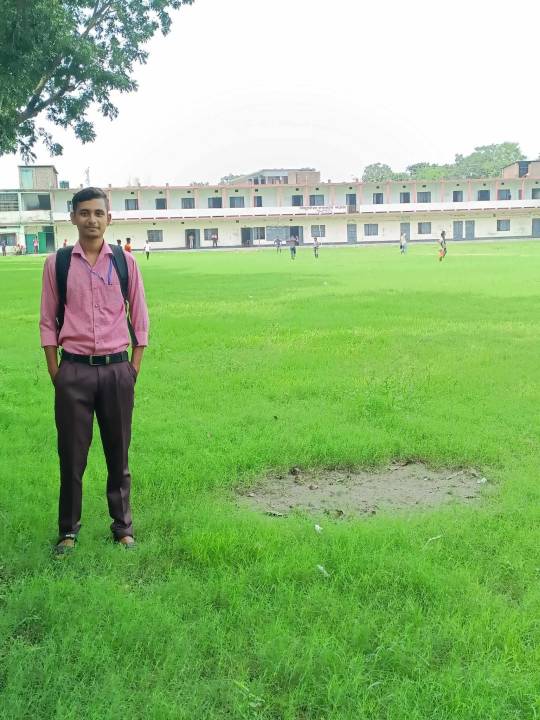
Job outlook for graphic contrivers
As with numerous creative fields, the job outlook for graphic contrivers is largely competitive. The BLS predicts that there will be a 3 percent increase in the need for graphic contrivers from 2021 to 2031. This is slower- than-average growth due in part to the decline in design jobs at journals, magazines, and traditional print publishing companies, balanced by an increase in the digital presence of companies. Demand for online design is projected to increase, according to request exploration company IBISWorld( 2).
How to come a graphic developer
still, follow the way below to streamline your process
If you are ready to pursue a career in graphic design.
1. Get a graphic design education.
According to Zippia's analysis of over 120,000 graphic developer resumes, 68 percent of graphic contrivers have a bachelorette’s degree, while 23 percent have an associate's degree( 3). Earning a graphic design degree( or degree in a affiliated field) helps you make foundational career knowledge and gives you openings to begin erecting a portfolio of work to show implicit employers.
Look for programs accredited by the National Association of seminaries of Art and Design. Coursework in these programs generally includes principles of design, motorized design, publishing ways, plant art, and website design.
2. Gain exposure to the field.
While enrolled in a design program, be sure to make applicable chops to make yourself more competitive when you ’re job- stalking for a graphic design position, including
Getting an externship and working with more educated contrivers in a real- world setting
donating your design chops to original charitable associations
Taking courses on specific graphic design motifs, similar as the University of Sydney's Innovation through Design course or Google's UX Design professional instrument.
Pursuing instrument in popular graphic design products like Adobe.
Joining a design association. Class frequently comes with access to networking and professional development openings. You can join the American Institute of Graphic trades( AIGA) at different situations, including pupil, arising, professional, leader, or preceptor.
Glossary of graphic design terms
CMYK A color model generally used in print illustrations that stands for the four colors used in essay plates cyan, magenta, unheroic, and crucial( black)
Hex law A six- number HTML law that represents a color used in a computer design program
youtube
Infographic A visual representation of data designed to present information easily and efficiently
JPEG A format for compressing graphic image files
Mood board A collection of images and textbooks that communicates a design or brand’s overall aesthetic messaging
PPI Pixels per inch, an important term that measures the viscosity of pixels on the defenses of colorful bias to determine resolution
Resolution The quantum of detail an image or digital display can show measured in blotches per inch( published image) or pixels per inch( digital image)
Typography The manipulation of the style and appearance of published or digital matter so it's comprehendible, readable, applicable, and aesthetically pleasing
stoner interface( UI) design The design of interfaces in software, apps, websites, or computer bias to maximize their usability
Vector image A graphic train erected by points on a grid that can be acclimated without losing resolution
1 note
·
View note